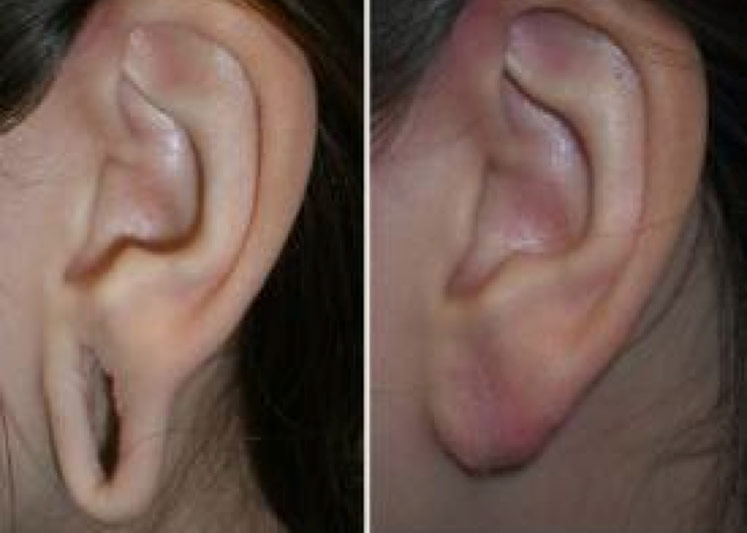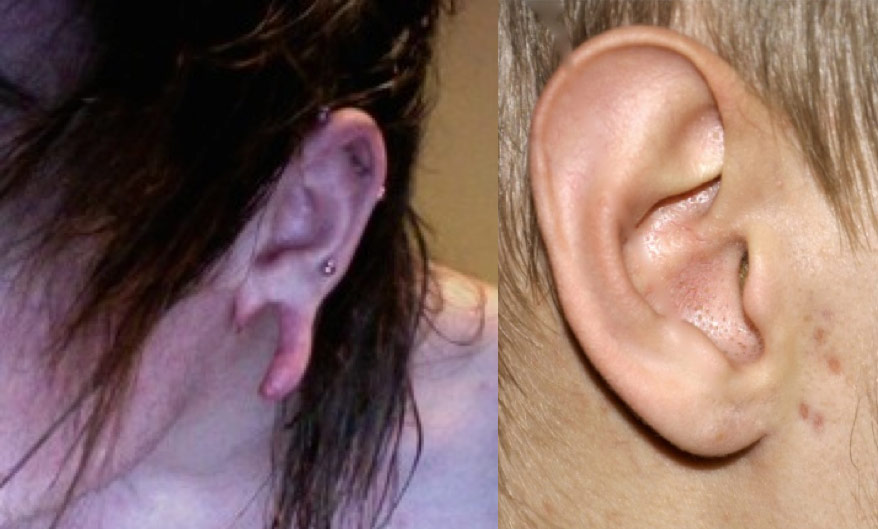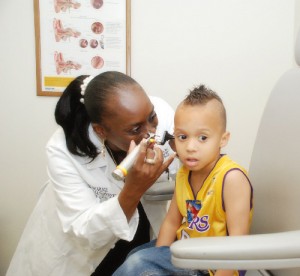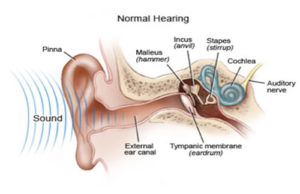The enlargement or stretching of the earlobe is a custom that has been around for centuries. People have done this for a variety of reasons, ranging from religious practices to fashion trends.
A recent practice among adolescents and young adults involves the stretching of the ear with large diameter piercings known as “gauges”. There are, however, individuals who stretch their earlobes too fast, causing tearing that often requires reconstructive surgery. Gauge users commonly request earlobe reconstruction during later stages of their lives when seeking employment in traditionally conservative business settings or when seeking a more serious image within society.

Is it possible for my ears to recover from stretching on their own to avoid surgical reconstruction?
Yes, it is possible for the earlobe to recover. The earlobe is made up of fatty tissue that is covered by soft skin, which is very capable of recovering its original shape in a few months only if the size of the piercing is not too large. The earlobe can shrink back to its normal size if the earring or gauge is less than 14mm or a size 2 gauge. Anything larger than this size will require reconstructive surgery.
Stretching of the ear with gauge piercings is a process that takes many months and should not be rushed. If the process is rushed, it will damage the earlobe tissue, causing scarring, and preventing it from healing on its own. When deciding to use gauge piercings, it is very important to stretch the earlobe slowly and carefully without skipping ahead to larger sized gauges before the ear is ready.
What will help an earlobe heal faster without an earlobe reconstruction?
There are many things that can help the healing process such as:
- Removing earrings from the ears
- Massaging the earlobe to promote blood flow
- Topical Vitamin E oil applications
- Juvederm, a cosmetic filler injected by surgeons to regain fullness and thickness of the earlobe.
What might prevent an earlobe from recovering on its own?
There are various things that can slow or prevent adequate healing, including:
- Infection of the earlobe or surrounding skin
- An ear piercing that is too large
- Continual use of heavy ear jewelry
- Re-piercing before healing has finished
- A tear in the earlobe
What does an earlobe reconstruction consist of?
Earlobe reconstructions consist of refreshing the edges of the enlarged ears and sewing the edges together to decrease the size of the ear piercing. If the earlobe is torn, the surgeon will stitch the torn edges to get the earlobe back to an appropriate size or shape.
What are the advantages and disadvantages of surgical reconstruction?
Advantages
|
Disadvantages
|

What are the risks of piercing or stretching earlobes after reconstructive surgery?
After surgery has been performed on the earlobe, it is very risky to stretch the earlobe again if it has not fully recovered. Premature re-piercing can cause the thin and delicate tissue of the earlobe wound to reopen and the earlobe to tear. It is advisable to wait an average of two weeks to re-pierce the earlobe if there are not any complications or infections following surgery.
To learn more about earlobe reconstruction, please contact the Osborne Head and Neck Institute.



